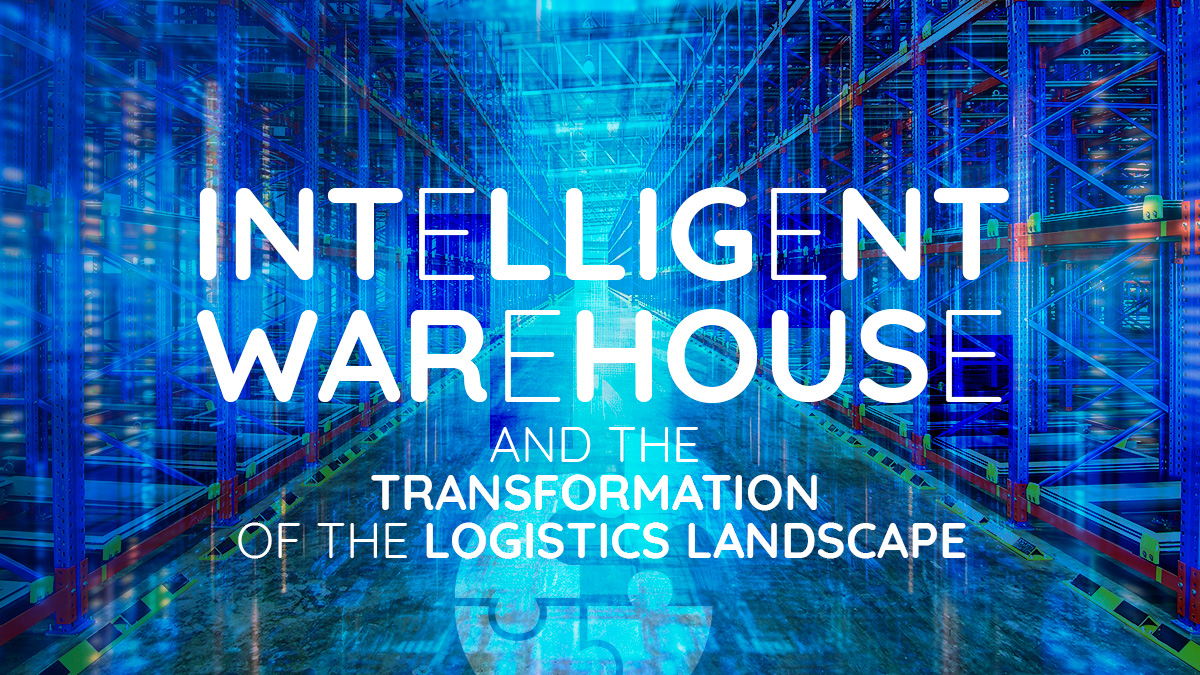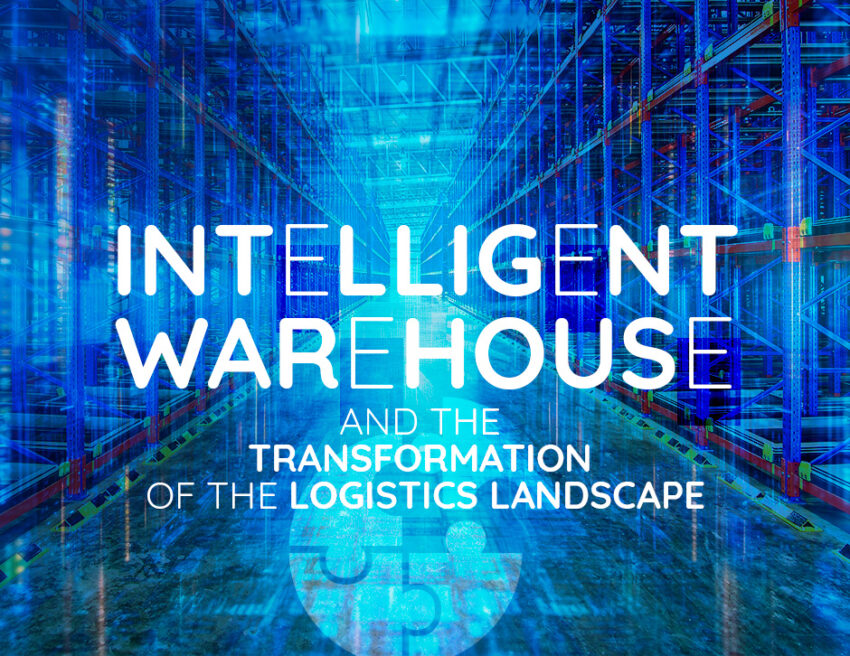In recent years, the logistics and supply chain sectors have undergone significant transformations, driven by technological advancements and evolving consumer expectations. One of the most prominent changes is the rise of intelligent warehouses, where cutting-edge technologies like artificial intelligence (AI), the Internet of Things (IoT), robotics, and data analytics are revolutionizing how goods are stored, managed, and delivered. This evolution is helping companies enhance efficiency, reduce costs, and improve customer satisfaction. In this blog, we will explore the concept of intelligent warehouses, the technologies that power them, the benefits they bring, and the future they promise for logistics professionals.

What Is an Intelligent Warehouse?
An intelligent warehouse refers to a logistics facility that incorporates advanced technology to automate and optimize various processes, from inventory management to order fulfillment. These warehouses use a combination of hardware, software, and data-driven insights to make real-time decisions, improve operational efficiency, and enhance the overall user experience. Unlike traditional warehouses, where human workers manually perform most tasks, intelligent warehouses integrate robotics and AI-driven systems to handle repetitive tasks, freeing up workers to focus on more complex activities.
Key Technologies Powering Intelligent Warehouses
The backbone of an intelligent warehouse is the seamless integration of various advanced technologies. These technologies work together to create a highly automated, efficient, and data-driven environment. Let’s dive into the key technologies that enable intelligent warehouses to operate at peak performance.
Artificial Intelligence (AI) and Machine Learning
AI and machine learning are at the core of intelligent warehouses. These technologies help optimize inventory management, demand forecasting, and order picking. For instance, machine learning algorithms analyze historical data to predict which products are likely to be in demand, allowing warehouses to stock up on items more efficiently and reduce excess inventory. AI-powered robots can also optimize the paths they take to pick up items, improving efficiency and reducing the time spent on each order.
Internet of Things (IoT)
IoT devices are embedded in warehouse equipment, shelves, and products, providing real-time data that can be used to monitor and manage warehouse operations. Sensors track the location of goods, detect when inventory levels are low, and even monitor the condition of items to ensure they are stored properly. This real-time data flow enables warehouse managers to make more informed decisions and improve inventory accuracy.
Robotics and Automation
Robotics and automation are revolutionizing the way warehouses operate. Automated Guided Vehicles (AGVs) and Autonomous Mobile Robots (AMRs) are used to move goods around the warehouse floor, eliminating the need for manual labor. These robots are equipped with advanced navigation systems, allowing them to avoid obstacles and efficiently transport goods from one area to another. Additionally, robotic arms can be used for order picking and packing, reducing the time and labor required for these tasks.
Data Analytics and Cloud Computing
Data analytics and cloud computing are essential in the operation of intelligent warehouses. With vast amounts of data being generated daily, cloud-based platforms enable warehouses to store, analyze, and access this information from anywhere. By using data analytics, companies can optimize warehouse layouts, improve inventory management, and predict demand more accurately. Cloud computing also ensures that all systems in the warehouse are integrated and can communicate with each other, enhancing overall operational efficiency.
Benefits of Intelligent Warehouses
The shift towards intelligent warehouses brings numerous advantages to logistics companies, warehouse operators, and their customers. Here are some of the key benefits of adopting intelligent warehouse solutions.
Enhanced Efficiency and Productivity
One of the most significant advantages of intelligent warehouses is the improvement in efficiency. Automation and robotics reduce the time spent on manual tasks such as picking, packing, and inventory management. AI-powered systems optimize workflows by streamlining processes and reducing human error. This leads to faster order fulfillment, higher throughput, and overall better performance in meeting customer demands.
Cost Reduction
Although the initial investment in intelligent warehouse technology may be high, the long-term cost savings are substantial. By automating repetitive tasks, companies can reduce labor costs and minimize errors that result in costly mistakes. Additionally, the ability to accurately predict demand and optimize inventory levels leads to fewer stockouts and overstock situations, further cutting costs associated with warehousing and logistics.
Improved Accuracy and Inventory Management
Intelligent warehouses leverage IoT sensors, AI, and data analytics to improve inventory management accuracy. With real-time tracking and automated stock replenishment, the risk of human error is greatly reduced. This results in fewer inventory discrepancies, less product wastage, and better stock control. Automated systems can also notify managers when stock levels are low, preventing shortages and ensuring that customer orders are fulfilled promptly.
Better Customer Experience
In an increasingly competitive market, providing an exceptional customer experience is critical. Intelligent warehouses play a vital role in this by ensuring quicker order fulfillment, more accurate shipments, and greater transparency in the supply chain. Customers benefit from faster deliveries, more accurate tracking information, and a higher level of service overall. Furthermore, intelligent warehouses enable companies to respond more flexibly to changing customer demands, improving satisfaction and loyalty.
Challenges in Implementing Intelligent Warehouses
While the benefits of intelligent warehouses are clear, the path to implementation can be challenging. For many businesses, especially smaller ones, the upfront costs of investing in new technology and infrastructure may seem prohibitive. Additionally, there may be a steep learning curve associated with adopting these technologies, requiring warehouse managers and staff to undergo training. Integration with existing systems can also pose challenges, particularly for warehouses that rely on legacy infrastructure. However, as technology continues to evolve and become more affordable, these challenges are expected to diminish.
The Future of Intelligent Warehouses
Looking ahead, intelligent warehouses will continue to evolve, driven by advancements in technology and the increasing demand for faster, more efficient logistics. As AI, robotics, and IoT become more sophisticated, warehouses will become even more automated, requiring less human intervention. We can expect to see more autonomous systems capable of performing complex tasks, such as sorting and packaging, with greater accuracy and speed.
Additionally, the integration of smart technologies with blockchain will provide more transparency and security in the supply chain, allowing real-time tracking of goods and ensuring data integrity. The use of predictive analytics will also become more advanced, helping warehouses forecast demand with greater precision and optimize stock levels accordingly.
Conclusion
The rise of intelligent warehouses represents a vital shift in the logistics and supply chain industries. By harnessing the power of AI, IoT, robotics, and data analytics, companies can achieve higher levels of efficiency, accuracy, and customer satisfaction. While the initial investment and integration process may present challenges, the long-term benefits far outweigh the costs. As technology continues to evolve, intelligent warehouses will play an increasingly crucial role in shaping the future of logistics, boosting innovation and providing businesses with the tools they need to stay competitive in a fast-paced, demand-driven world.


